The educational materials listed on this page are about Grazing Management.
Grazing management is critical to any pasture-based livestock farming system. Rotational grazing, intensive rotational grazing and management intensive grazing are key to successful and sustainable rotational grazing systems. So, what is rotational grazing? Careful grazing strategies include stocking rates of cattle, time spent on each paddock or pasture, how many times a herd revisits that same paddock or pasture throughout the year, and incorporating multi-species grazing to reduce parasite loads. Management approaches used to increase grazing uniformity, such as water sources and fencing, improve livestock grazing distribution problems. Rotational grazing cattle may also require capital expenditures. Thus, less expensive, practical solutions, like selecting cattle with desirable grazing patterns and culling cattle without, have been suggested as tools for improving managed intensive rotational grazing. This makes a rotational grazing definition difficult to refine depending on geographic location. Key practices include holistic management, grazing management, rotational grazing, livestock breeding, stocking rate, rangeland pasture management, pasture renovation, watering systems, multi-species grazing, continuous grazing.
The Rangeland Management Strategies bulletin has information for multi-species grazing and winter grazing, and it offers advice for forage management and vegetation management, as well as practices for protecting riparian areas. SARE’s Small Ruminant Toolbox offers producers with small ruminant livestock enterprises practices that provide pest, weed and parasite control. Smart Water Use on your Farm or Ranch can be used to better understand the role of water in a farm system and in grazing management.
Showing 1-7 of 7 results
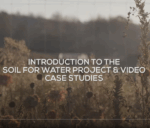
Soil for Water
This series of 11 semi-structured interviews was carried out by Virginia Tech and Virginia Cooperative Extension to better understand farmers’ and ranchers’ agroecological motivations and values related to the protection and conservation of water resources. The series highlights diverse farms of Virginia’s agricultural community through a narrative inquiry framework. Introduction to the Soil for Water […]
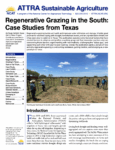
Regenerative Grazing in the South: Case Studies from Texas, Arkansas, Mississippi and Virginia
A multistate team lead by the National Center for Appropriate Technology developed the following series of rancher profiles as part of a larger project to promote regenerative grazing and soil health throughout the South. Case Studies from Texas This publication explains historical factors that have created barriers to adoption and profiles a working group and […]
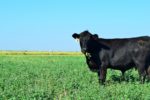
The Performance of Cover Crops in Minimally Tilled Forage-based Grazing Systems
In a Southern SARE-funded Graduate Student Grant (GS15-152), “Evaluation of Winter Annual Cover Crops Under Multiple Residue Management: Impacts on land management, soil water depletion, and cash crop productivity,” Texas Tech University researchers investigated five cover crops species as potential complements to a warm-season beef-stocker grazing system. The impact of the project was two-fold: Stabilize the soil surface from excessive wind erosion and desiccation; and strengthen rural communities by ensuring the persistence of profitable agriculture in the region.
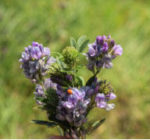
Integrating Legumes with Grass to Improve Forage-Livestock Systems
In a Southern SARE-funded Research and Education Grant (LS14-261), "Long-term Agroecosystems Research and Adoption in the Texas Southern High Plains -- Phase III," Texas Tech University researchers conducted a steer grazing trial comparing a grass only system to a grass-legume system for animal productivity and water use efficiency.
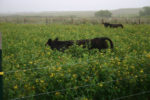
Grazing Cover Crops in Cropland
For some producers with extensive experience using cover crops, grazing can be a ‘next step’ in obtaining additional economic value while achieving environmental stewardship.
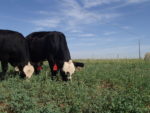
Introducing Annuals in Grazed Pastures
Annual cover crops provide ecosystem benefits to perennial-based pasture systems by introducing quality forage at opportune times of the year, creating a more diverse farm habitat, and providing opportunities to renovate overused or underutilized areas of the farm.
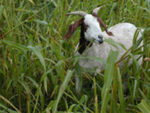
Sustainable Year-Round Forage Production and Grazing/Browsing Management in the Southern Region
An educational training video to increase the productivity, quality, and production of forages, as well as to improve management of existing pastures for sustainable livestock production.